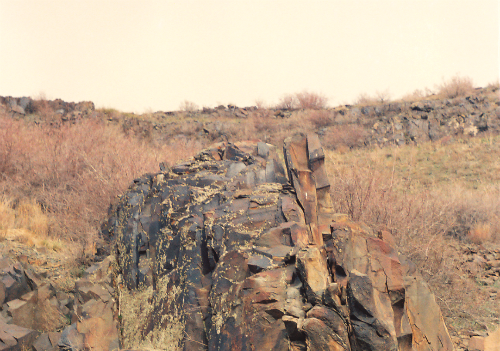Tamgaly Petroglyphs

More than 2,000 rock paintings (petroglyphs) were discovered in the 50s of the 20th century in Tamgaly Gore, situated 170 km north-west of Almaty in the mountains of Anrakhai. Tamgaly shrine is a huge open air museum preserve, which is of great interest to historians and archaeologists. Its area is 3.8 thousand hectares.
Researchers have identified several rock painting groups. They include pictures of animals, such as deer, mountain sheep, oxen, and horses, and humans. The most interesting themes include hunting, war, sacrifice, and erotic scenes. A special place in Tamgaly drawings is given to sun-headed deities. The size of some drawings reaches one meter.
There were also a large number of settlements, places of worship and burial grounds, dating back to the Bronze Age and later periods of human civilization, found in Tamgaly.
One of the most ancient settlements had been built next to the Tamgaly shrine in 12-11 centuries B.C. It was discovered during excavations under a three-meter layer of dirt. Stone boxes - cysts - from the ancient tombs which were put together from slabs of slate and where the dead were placed together with household items survived to the present day. More recent evidence of human presence in these places is the mounds built of dirt and stones.
In 2004, the petroglyphs of Tamgaly as an ancient historical and cultural monument of Semirechye were added to the UNESCO World Heritage List.


